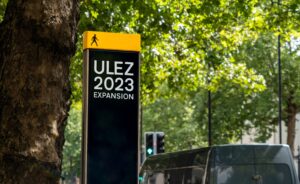Air quality is now one of the most important issues of our time, affecting not only the wellbeing and productivity of building occupants but also significantly contributing to the risk of virus transmission. In June 2021, on Clean Air Day, Evotech Air Quality launched its #CleanAirSchools campaign during the pandemic, to support local schools to monitor and improve their air quality.
We pledged to support local schools in Calderdale, West Yorkshire, where our head office is based and offered five schools a fully funded, zero cost, air quality monitoring programme supported by our local team of engineers, with the aim of helping teachers and pupils to see what’s in the air they are breathing and to help them find ways to improve it.
Teaming up with our product partners, Airthings and Airly, we installed state-of-the-art air quality monitoring sensors throughout our five #CleanAirSchools during the 2021 summer holidays, and have provided them with educational materials, including interactive white boards, to help young people understand more about air pollution and involve them in monitoring the air in their own classrooms.
Naturally ventilated schools sited near polluted roads cause added concerns
Four out of the five schools we are supporting are in old buildings sited near busy main roads. Older buildings tend to be poorly ventilated leading to the build-up of stale air, and the opening of windows and doors can cause the ingress of pollutants such as PM2.5 and NO2, further adding to the air quality conundrum schools have.
59% of English state schools were built before the 1980s and by design have limited energy and thermal efficiency. Most classrooms also have high occupancy levels which can cause CO2 levels to rise rapidly, resulting in stale air and high virus transmission risks. And, according to the DfE’s Condition of School Buildings Survey 2021, the estimated cost of remedial repairs to the 22,031 state schools, in England alone, is £11.4 billion.
The affects CO2 can have on children
Research shows that children are more sensitive to atmospheric pollution as their lungs are still developing, and they breathe higher volumes of air relative to their body weights than adults do. High CO2 levels can cause headaches, restlessness, drowsiness, increased heart rate and blood pressure and is also directly correlated to low productivity and increased absenteeism.
Improving ventilation can therefore reduce the risk of illness and respiratory symptoms, and studies have shown that it can also improve pupils’ concentration, cognitive performance, and productivity, with schools with better ventilated classrooms having higher test scores.
Results of the year-long study
During the first year we focussed on classroom CO2 levels as this also provides a useful measure of how adequate ventilation levels are. Our team analysed more than 9.2 million sensor readings across the five schools over the academic year with some staggering headline results.
With sensor sampling frequency every 5 minutes, the data covers classroom hours only, between Mon 6 Sep 2021 and Wed 27 July 2022 and excludes holidays.
The highest recorded CO2 reading of 5,966ppm (parts per million), is a staggering 4,466ppm above DfE guidelines of 1,500ppm. However, the average classroom CO2 reading across all classrooms in the five schools over the whole academic year was 959ppm, which as a stand-alone figure looks fine, but the total number of hours spent over 1,500ppm was 4,846 which is far from ideal.
The Airthings indoor air quality monitors we used include a CO2 alert that lets you know when carbon dioxide (CO2) levels get too high. Over the academic year, across the five schools the total number of CO2 alerts over 1,500ppm was 57,599. This alerted teachers to bring fresh air into the room by opening windows and doors where possible, however, during the winter months it proved difficult to keep classrooms warm enough when windows were open, and the CO2 data on cold days backs this up. Ideally, schools need ventilation systems retrofitting that will increase ventilation levels by bringing in filtered outdoor air to dilute the stale air indoors.
Year 2 study on PM2.5
We’re not done yet, as CO2 is only part of the problem. The Evotech team continue to work with the five Calderdale schools and together, during Year Two (September 2022 to July 2023), our focus is on Particulate Matter (PM), a serious air pollutant that can be inhaled deep into the lungs where it can cross into the bloodstream and cause serious health problems.
The data is already showing trends of high PM levels and, as four of our five #CleanAirSchools are in old buildings with natural ventilation, and within close proximity to busy roads, opening doors and windows is not the best solution

















Leave a Reply